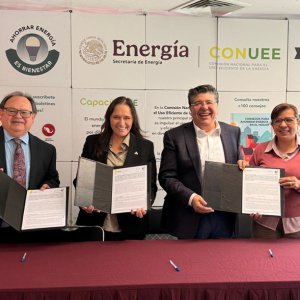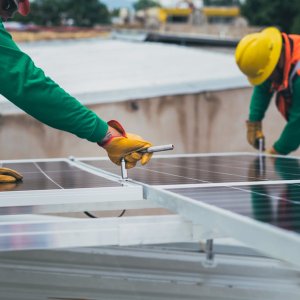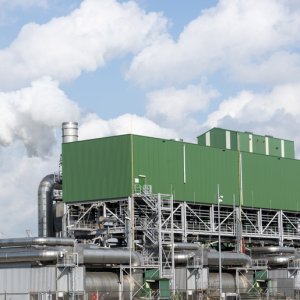Why Is Cop26 the Most Important Summit of 2021?

STORY INLINE POST
One of the most relevant events of our generation is taking place in Glasgow: The United Nations Conference on Climate Change, or COP26 started last Sunday, October 31 and will be held until the 12th of November.
But, before explaining the significance of COP26, we must first explain the COP’s history and everything that has happened so far around the global discussion on climate change.
The largely documented impact of human activities on climate over the last 40 years has resulted in international organisms such as the United Nations and many countries joining forces to fight against climate change. The constant need to exploit our natural resources to accelerate the economic growth and well-being of humanity has brought us to a point where our carbon footprint needs to be mitigated to ensure that the next generations will live on a healthy planet.
In this context, the UN launched a series of meetings with world leaders to build a mitigation plan that addressed the challenges ahead: how to reduce the emissions of today and how to capture past emissions. In 1972, the first meeting took place in Stockholm, Sweden. The Stockholm Convention is seen today as the foundation for discussion on global environmental policies.
More than 10 years later, in 1988, the Intergovernmental Panel on Climate Change (IPCC) was created. This task force was established by the World Meteorological Organization and the UN Environment with the aim of providing a trustworthy source of scientific information. IPCC is one of the leading global institutions in the investigation into climate change. Also, it has done significant research on the impact that human activities have on our environment and how fast our environment is degrading. In its last report, published only a few months ago, IPCC mentioned that the degradation of our planet was happening at a faster pace than expected and urged immediate action to counter this.
To discuss IPCC’s findings and build an international collaboration around climate change, in 1994 the UN hosted the first high level meetings, called Climate Conferences, Conferences of the Parties, or COPs.
The COPs have set the scene for some of the most relevant international agreements that include joint action between countries and mitigation goals. This is the case of the Kyoto Protocol of 1997 and the Paris Agreement of 2021. In all cases, the main goal has been to reduce greenhouse gas (GHG) emissions, capture and storage of carbon emissions and take action to limit the increase in the average temperature of the planet to 1.5°C.
In these meetings, Mexico has joined the initiative of the Nationally Determined Contributions (NDCs), which are the heart of the COPs. Our country has set its own individual goals, which are included in the Energy Transition Law.
So far, Mexico’s commitment is focused on increasing power generation through clean sources and reducing emissions to our atmosphere.
In clean energy generation, Mexico’s strategy is focused on generating at least 35 percent of our electricity by 2024 and 45% percent by 2030 using these sources. With this strategy, Mexico could reduce by 22 percent its GHGs. This is important because 60 percent of GHG emissions in our country come from non-renewable power generation. At the end of 2020, Mexico had an installed capacity of more than 4,000MW of solar energy, with annual growth of more than 30 percent from 2015 to 2019.
In emissions reduction, Mexico’s strategy is focused on methane, which generates an impact 80 times greater than carbon dioxide. Methane is produced by livestock and the exploitation of hydrocarbons.
Methane is poorly captured gas that is sent to the atmosphere. If this vented gas could be captured, nearly 50 percent of the country's residential consumption of natural gas could be satisfied. This is one of the many opportunities that our country has to operate more efficiently and according to the capture-rules set in international conventions.
Mexico has a long way to go when it comes to emissions of carbon dioxide. A UN report published in 2021 predicts that CO2 emissions will not decrease by 45 percent by 2030, as the Paris Agreement intends, but could increase by 16 percent. The document mentions Mexico as one of the Top 20 countries with the most emissions of CO2. Mitigating our emissions of this gas is paramount and should be at the heart of every climate strategy launched by this administration.
The discussion about climate change presents a great opportunity for Mexico to position itself as a leading country in the matter. The Mexican government has made clear the relevance of climate finance to achieve the goals of the Paris Agreement and the need to increase efforts to finance adaptation at the same level as eradication.
At COP26, it is expected that the Mexican government will present a proposal for regional and international financial institutions to provide financing to the countries of Latin America and the Caribbean to face climate change.
At the international level, it is worth mentioning that both China and the United States have agreed to collaborate jointly with other countries to strengthen the implementation of the Paris Agreement and reduce climate change.
This is a cornerstone that must be celebrated in light of the recent statements of President Joe Biden that point toward the United States rejoining the Paris Agreement with the other 194 nations that support the agreement and move forward in the goal of holding the global rise in temperature at 2° C.
I’m expectant of what COP26 will bring in terms of new commitments and new strategies that all countries will launch this year to accelerate the implementation of the Paris Agreement, since there are studies that indicate that, due to the COVID-19 pandemic, there is now a 40 percent probability of reaching the 1.5°C temperature increase in the next five years.
This is a new chance to endorse our commitment and take significant steps toward having a friendlier relationship with our planet. It is time to make an honest assessment of our capabilities to meet our commitments, set new goals and take a leadership role in the global debate on climate policies. COP26 is aligned with our commitment of taking action in favor of our country and sets the scenario to discuss our responsibilities as individuals and as a community. Saving the planet is saving our life.
























